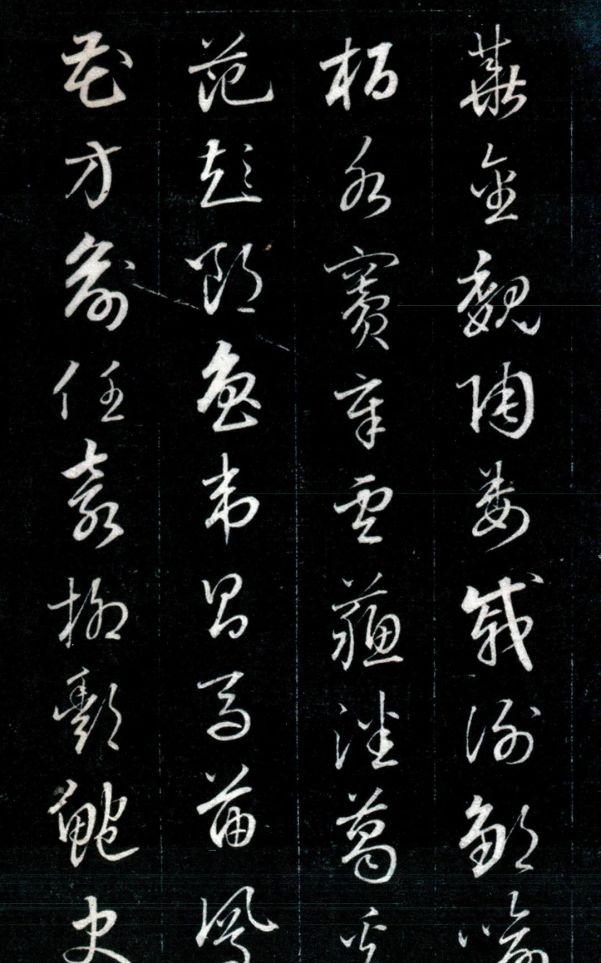Cursive writing can be divided into large grass and small grass, in short, large grass is a continuous writing of small grass, and it can also become "wild grass".
It is rare in the history of calligraphy to write about this kind of "wild grass" and to a certain extent, the Jin people have Wang Xianzhi, the Tang people have Zhang Xu and Huai Su, the Song Dynasty has Huang Tingjian, the Ming Dynasty has Fu Shan, Wang Duo, Ni Yuanlu and others, and in modern times, there are almost no people who can surpass their predecessors in the field of big grass.

Prince Cheng's "Cursive Hundred Family Names"
In the field of Xiaocao, who can achieve certain achievements in technique and temperament, in the past 300 years, there is a person who deserves to be written about, he is Qianlong's eleventh son Yong Yao!
Yong Yao was later made a prince, known as a prince!
In the Qing Dynasty, almost all calligraphers were generally influenced by the so-called "pavilion style", which was the product of the development of the imperial examination system to a certain extent.
The imperial examination system began to be established in the Sui Dynasty, in the Tang Dynasty small strides forward, to the Song Dynasty has been further developed, and to the Ming and Qing dynasties, it has developed the highest peak, and for the readers who participated in the imperial examination, writing a good stroke of character is a key to success, Wen Zhengming, Dong Qichang once fell off the list because of poor calligraphy, and later practiced calligraphy to become a generation of masters, the great literary scholar Gong Zizhen is also because of poor calligraphy, the examination fell off the list, which shows the importance of calligraphy to the imperial examination system.
It is precisely because of this that many scholars have taken the "Pavilion Style" calligraphy, which is generally applicable to the imperial examination, as their own calligraphy pursuit, so they have formed a state of "Pavilion Style" that is almost "one side of a thousand people", and it is also a regression for the personality of calligraphy art.
Prince Cheng is one of the few people who can get out, he is one of the few calligraphy masters in the Qing Dynasty who can "open up the five bodies", he grew up in a favorable environment since childhood, he can protect himself without being disputed by the emperor, and has become a "happy prince"!
He had an emperor father who loved to collect, and he himself inherited his father's mantle, especially in the field of calligraphy and painting, he had the opportunity to witness the best precious Fa Ti in the past and the present, and these famous masterpieces greatly nourished his artistic talent.
Prince Cheng once wrote a cursive volume called "Hundred Family Names", which was hailed as the most beautiful cursive script in the Qing Dynasty.
This title is indeed worthless, and when it comes to the purity of Xiaocao's skill, the flow of wind between the lines, the Qing Dynasty can be compared to prince Cheng's rare horns!
In ancient private school teaching, there were several books that must be read and memorized, called "three hundred thousand thousand", that is, "Three Character Classic", "Hundred Family Names", "Thousand Character Text" and "Thousand Family Poems", and "Hundred Family Names" has both the functions of literacy and calligraphy, and has become an important carrier of calligraphy throughout the ages.
After prince Cheng's cursive book "Hundred Family Names" came out, it soon became an important model for people to learn cursive, "Hundred Family Names" has a total of 568 characters, each word is a common word.
For cursive learners, to have the ability to "remember", that is, to see a word, you have to know how to write, which is the same as seal writing, because contemporary cursive writing is not a practical font, different from the Wei and Jin dynasties, so it requires a lot of memory and practice.
And as a classic cursive model, but also able to write cursive is very "bookish", and at the same time elegant and unaccustomed, Prince Cheng's "Xiaocao Hundred Family Names" is the best choice for learning Xiaocao calligraphy!